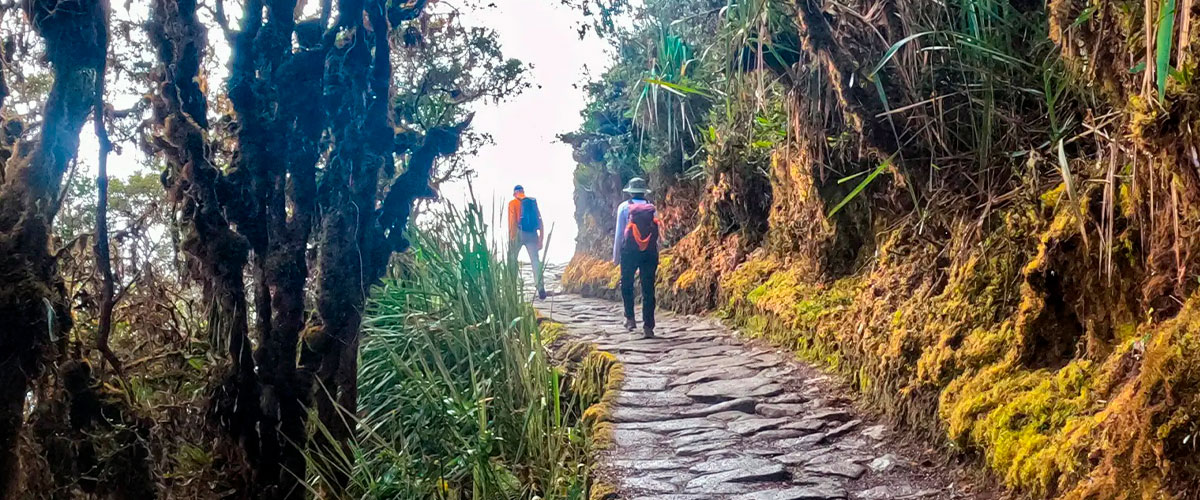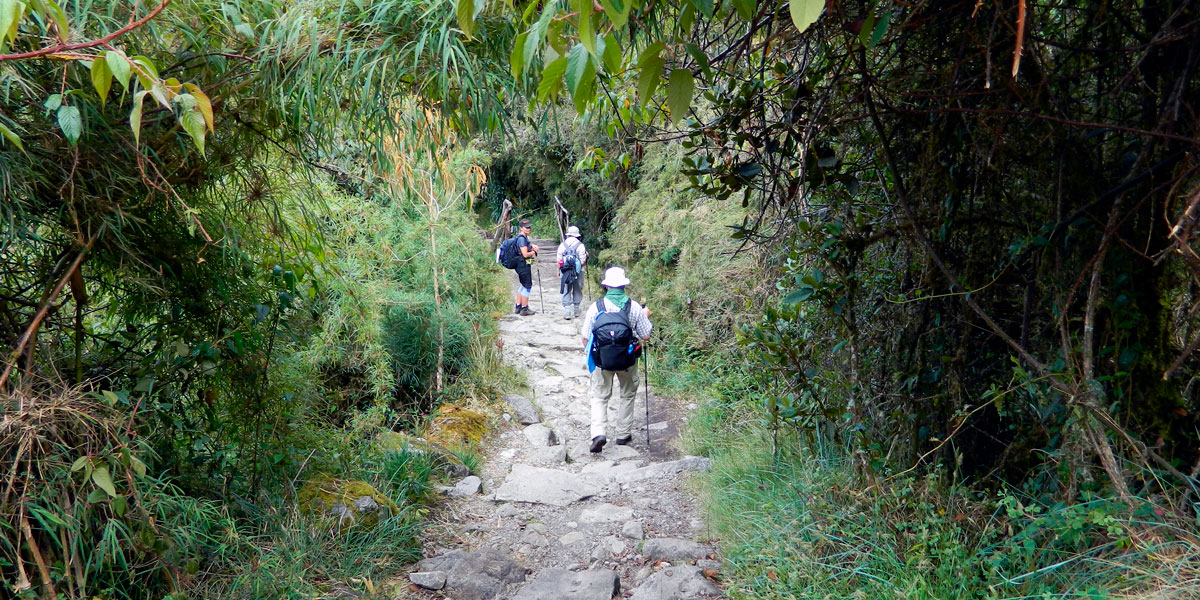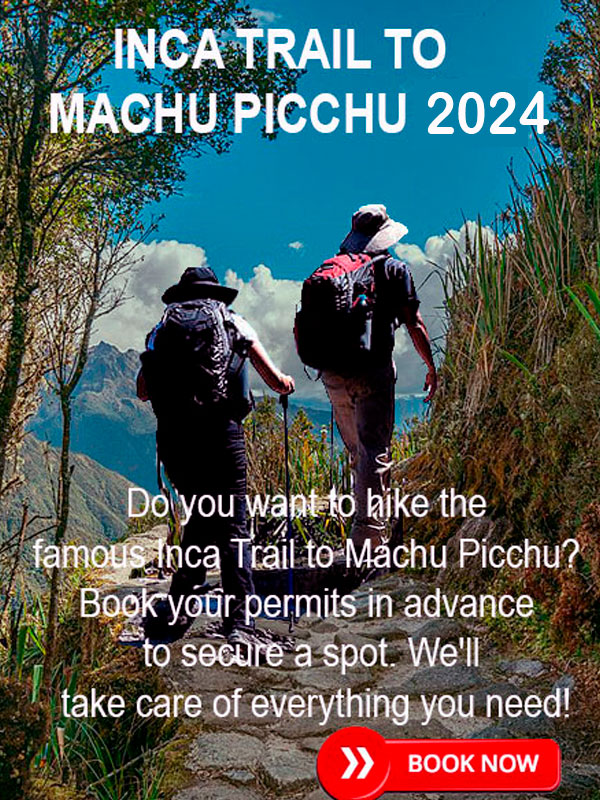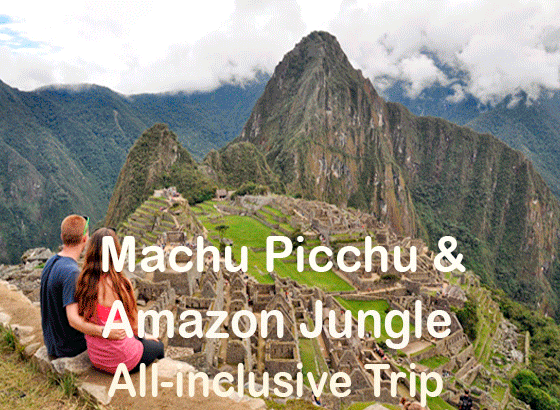Secure Your Inca Trail Permits – Essential Guide

Are you dreaming of embarking on a once-in-a-lifetime trek to Machu Picchu via the legendary Inca Trail? If so, securing your Inca Trail permits is an essential first step. In this comprehensive guide, we will provide you with everything you need to know to plan ahead and obtain your Inca Trail permits for an unforgettable journey.
Key Takeaways
- Plan ahead to secure your Inca Trail permits for a trek to Machu Picchu
- Understanding the regulations surrounding Inca Trail permits and their significance to Machu Picchu is important
- Choose a reputable tour operator and carefully plan your Inca Trail trek for a successful and enjoyable experience
- Consider alternative treks if Inca Trail permits are unavailable or for a different experience
- Respect cultural customs and minimize your ecological footprint for responsible travel during your Inca Trail trek
Why You Need Inca Trail Permits
Before embarking on the Classic 4-Day Inca Trail, it’s essential to understand why obtaining permits is necessary. The Peruvian government restricts the number of visitors allowed on the Inca Trail each day to protect the natural and cultural heritage of the trail. Additionally, the permits are required to trek through the Machu Picchu Historical Sanctuary, which is a protected area.
The regulations surrounding Inca Trail permits help preserve the site’s integrity and ensure a memorable experience for all visitors. Without permits, you won’t be able to access the Inca Trail or enter Machu Picchu upon completion of the trek.
The Inca Trail is a significant part of Machu Picchu’s history and culture. During the trek, hikers have the chance to witness the incredible architecture and engineering feats of the Inca civilization, as well as the stunning landscapes of the Andes mountains. By obtaining Inca Trail permits, you’ll be able to embark on a journey of a lifetime and become a part of this unique history.
Book The 4-Day Inca Trail to Machu Picchu
When and Where to Apply for Inca Trail Permits
Planning your Inca Trail trek starts with securing the necessary permits to explore this historic trail. It’s important to note that Inca Trail permits are capped at 500 per day, with only 200 allocated for tourists and the remaining 300 for tour guides, porters, and cooks. We recommend applying for your Inca Trail permits at least 6 months in advance to secure your desired dates.
| When to Apply for Inca Trail Permits | Where to Apply for Inca Trail Permits |
|---|---|
| Permits for the high season (May to September) are released in January. | Applications for Inca Trail permits are made through the Peru National Institute of Culture (INC). |
| Permits for the low season (October to April) are released in March. | Peru Treks, a licensed tour operator, can assist you with the application process and provide additional support. |
It’s important to note that Inca Trail permits are not transferrable or refundable, so be sure to apply for the correct dates. In addition, all applications must be made with a valid passport number, as this will be cross-checked with your passport when you arrive at the trailhead. The maximum stay on the Inca Trail is 4 days and 3 nights, so plan accordingly.
Before you apply for your Inca Trail permits, it’s essential to be aware of the regulations surrounding the trek. For example, the use of drones, campfires, and the extraction of plants or animals is strictly prohibited. These regulations help preserve the natural beauty of the trail and protect the local wildlife.
Finally, be aware of the availability of permits for your desired travel dates. Certain times of year are more popular than others, so you may need to be flexible with your schedule. Once you secure your Inca Trail permits, you’ll be one step closer to embarking on an unforgettable journey to Machu Picchu.
Planning Your Inca Trail Trek
Embarking on the Inca Trail trek requires proper planning to ensure a comfortable and enjoyable journey. Here are some important factors to consider when preparing for your adventure:
Preparation
- Begin your training at least two months before departure to build endurance and stamina for the mountainous terrain.
- Consult with your doctor regarding vaccinations and medications needed for the trip.
- Check the weather forecast and pack accordingly.
Fitness Level Requirements
The Inca Trail trek is considered moderate to challenging, with long uphill climbs and steep descents. It’s crucial to have a good fitness level to avoid altitude sickness and enjoy the journey. We recommend the following fitness level requirements:
- Trekking for six to eight hours per day for up to four days.
- Climbing up to 4,200 meters above sea level.
- Carrying a backpack weighing up to 7 kilograms.
Equipment
| Essential Gear | Optional Gear |
|---|---|
|
|
“The Inca Trail trek was one of the most rewarding experiences I’ve had. The proper preparation and equipment made it even more enjoyable.” – John Smith, avid hiker
By following these tips, you can ensure a successful Inca Trail trek and make the most of your journey to Machu Picchu.

Choosing the Right Tour Operator
Selecting a reputable tour operator for your Inca Trail trek is crucial to ensure a safe and enjoyable experience. When researching tour operators, consider the following factors:
- Experience and reputation: Look for a company with years of experience and positive customer reviews
- Accreditation: Check if the tour operator is licensed and accredited by reputable organizations
- Safety measures: Inquire about safety procedures, emergency plans, and equipment provided
- Guides and staff: Find out if the tour operator employs knowledgeable and experienced guides
- Group size: Determine if the group size fits your preferences and needs
- Flexibility: Ensure the tour operator can accommodate any specific requests or requirements
By taking the time to research and choose a reputable tour operator, you can have peace of mind and focus on enjoying the breathtaking scenery and cultural landmarks on your 4-day Inca Trail trek to Machu Picchu.
Understanding Machu Picchu Permits
When planning your trip to Machu Picchu, securing Inca Trail permits is just the first step. You also need to obtain entrance tickets to the site itself. Here’s how to get your Machu Picchu permits:
| Step | Action |
|---|---|
| Step 1 | Visit the official Machu Picchu website or use a reputable tour operator to purchase entrance tickets |
| Step 2 | Select your preferred date and time for entry (tickets are time-specific and must be purchased in advance) |
| Step 3 | Enter your personal information and payment details |
| Step 4 | Print your tickets and bring them with you to Machu Picchu |
It’s important to note that regulations surrounding Machu Picchu permits are strict. Visitors must follow a designated route and are not allowed to veer from the path or climb on any of the ruins. There are also rules regarding photography, food, and drink. Be sure to review and follow all regulations to ensure a safe and enjoyable visit.
By obtaining both your Inca Trail permits and Machu Picchu entrance tickets in advance, you’ll be able to fully enjoy your journey to one of the world’s most breathtaking ancient sites without any hiccups.
Tips for a Memorable Inca Trail Trek
Embarking on the Inca Trail trek is an unforgettable experience. To make the most of this adventure, we’ve compiled a list of tips and recommendations:
- Bring comfortable, broken-in hiking shoes.
- Pack for all types of weather, including rain gear and warm layers.
- Drink plenty of water to stay hydrated, especially at high altitudes.
- Take the time to acclimate to altitude before beginning the trek.
- Bring snacks to keep your energy up on the long hike.
- Listen to your body and don’t push yourself too hard.
- Bring a camera to capture the stunning views along the way.
- Respect the natural environment and leave no trace behind.
By following these tips, you can be sure to have an incredible experience on your Inca Trail trek to Machu Picchu. Happy hiking!
Inquiry Now the 4-day Inca Trail to Machu Picchu
Alternative Treks to Consider
If Inca Trail permits are unavailable or you’re looking for a different experience, there are alternative treks to consider. These treks offer stunning views, challenging terrain, and a chance to connect with the Andean culture. We recommend researching each option thoroughly before making a decision.
Salkantay Trek
The Salkantay Trek is a challenging but rewarding five-day trek that takes you through the Andean mountains and provides stunning views of Salkantay Mountain. The trek ends in Aguas Calientes, the gateway to Machu Picchu. This trek is less crowded than the Inca Trail, making it an excellent alternative for those seeking a more immersive experience.
Lares Trek
The Lares Trek is a lesser-known alternative trek that offers an authentic cultural experience. You’ll trek through remote Andean communities and be immersed in local culture, including a visit to the hot springs of Lares. This five-day trek also ends in Aguas Calientes and provides a unique perspective of the Andean way of life.
Choquequirao Trek
The Choquequirao Trek is a challenging nine-day trek that takes you through the Vilcabamba mountain range, offering stunning views of the Andean valleys. The highlight is a visit to the Choquequirao ruins, which are often compared to Machu Picchu in beauty but without the crowds. This trek is recommended for experienced hikers looking for a unique and challenging experience.
Inca Quarry Trail
The Inca Quarry Trail is a three-day trek that offers stunning views of the Andean mountains and a visit to the Cachiccata quarry, where the Inca sourced the granite for many of their buildings, including Machu Picchu. This trek is perfect for those seeking a shorter trek or who want to learn more about Inca culture and history.
Consider these alternative treks if you want to avoid the crowds or can’t get Inca Trail permits. Each trek offers a unique perspective of the Andes and provides a chance to connect with the local culture. Remember to choose a reputable tour operator and plan ahead to ensure a safe and enjoyable trek.
Important Cultural and Environmental Considerations
There is more to trekking the Inca Trail than just securing Inca Trail permits and planning your journey. As responsible travelers, we must also consider our cultural and environmental impact during our travels.
Cultural Considerations
It’s crucial to respect local customs and traditions while trekking the Inca Trail. As visitors to Peru, we have a responsibility to learn about and appreciate the culture of the people we are visiting. Here are some ways to show respect and cultural sensitivity during your trek:
- Dress appropriately and avoid revealing clothing while visiting local communities.
- Ask permission before taking photos of locals or their property.
- Learn a few phrases in Spanish or the local language and don’t rely solely on English.
- Be mindful of noise levels and respect quiet hours in your campsites.
Environmental Impact
The Inca Trail is a fragile ecosystem that requires our protection. It’s important to reduce our ecological footprint as much as possible during our trek. Here are some ways to minimize our environmental impact:
- Pack out all your trash, including biodegradable waste like food scraps.
- Don’t disturb vegetation or wildlife along the trail.
- Use biodegradable soap and toiletries while washing.
- Minimize water usage where possible and take quick, efficient showers.
Responsible Travel
Responsible travel means being mindful of our impact on the local environment and communities. By trekking the Inca Trail responsibly, we can help preserve this incredible destination for future generations.
“Take only memories, leave only footprints.”
Staying Safe and Healthy on the Inca Trail
At every step of the way, your safety and well-being should be the top priority during your Inca Trail trek. Here are some essential tips to keep in mind:
Altitude Sickness
Altitude sickness is a common concern for many trekkers, especially when climbing to heights above 8,000 feet. To reduce your risk, we recommend taking ample time to acclimatize. This means taking time to rest and adjust to the altitude before attempting any strenuous activity. Additionally, consider discussing altitude sickness medication with your healthcare professional before departure.
Health Precautions
Ensure you take all the necessary health precautions before your Inca Trail trek. Make sure you are up-to-date on all necessary vaccinations, such as tetanus and hepatitis A and B. We also recommend bringing a first aid kit and any necessary prescription medications you may need during your trek. Don’t forget to pack sunscreen and insect repellent as well!
Safety Tips
Our top safety tips include drinking plenty of water to stay hydrated, wearing appropriate hiking gear, and sticking to the designated trail. As always, be mindful of your surroundings and stay aware of potential hazardous weather conditions. In case of emergency, remember that there are available emergency services along the Inca Trail.
“Take care of your body. It’s the only place you have to live.” – Jim Rohn
Embark on a Journey of a Lifetime with Secure Inca Trail Permits
At the heart of the Andes Mountains lies the ancient Inca Trail, leading to the historic and mystical Machu Picchu. With its breathtaking views and awe-inspiring ruins, it’s no wonder that this trek is on many travelers’ bucket lists. However, before setting out on your adventure, it’s essential to secure your Inca Trail permits.
By following our comprehensive guide, you can ensure a smooth and unforgettable journey. From understanding the regulations and applying for permits to planning your trek and choosing a reputable tour operator, we’ve got you covered every step of the way.
Not only will you need Inca Trail permits, but also Machu Picchu entrance tickets. We’ll cover all the necessary requirements, so you don’t have to worry about a thing.
Our insider tips will help you make the most of your Inca Trail experience, while also being mindful of cultural and environmental considerations. We’ll also provide valuable advice on staying safe and healthy during your trek, including tips for avoiding altitude sickness and what emergency services are available.
With secure Inca Trail permits, you’re one step closer to embarking on a journey of a lifetime to Machu Picchu. Let’s start planning your adventure today.
FAQ
Why do I need Inca Trail permits?
Inca Trail permits are required to regulate the number of visitors on the trail and protect the delicate ecosystem. It is necessary to preserve this historical site and ensure a sustainable experience for future generations.
When and where should I apply for Inca Trail permits?
Inca Trail permits should be applied for well in advance, as they are in high demand. You can apply through a licensed tour operator or the official government website. It is recommended to apply as soon as possible to secure your desired travel dates.
Are Inca Trail permits difficult to obtain?
Inca Trail permits can be competitive, especially during peak seasons. It is crucial to plan ahead and secure your permits early. Consulting with a reputable tour operator can help streamline the process and increase your chances of obtaining permits.
What happens if I can’t obtain Inca Trail permits?
If you are unable to secure Inca Trail permits, there are alternative treks available such as the Salkantay Trek, Lares Trek, Choquequirao Trek, and Inca Quarry Trail. These treks offer unique experiences and the opportunity to explore the beautiful landscapes of the region.
How physically fit do I need to be for the Inca Trail?
The Inca Trail is a challenging trek that requires a moderate level of fitness. It is advisable to engage in regular physical exercise and cardio workouts before embarking on the journey. This will ensure that you can enjoy the trek without experiencing excessive fatigue.
What equipment do I need for the Inca Trail?
Some essential items for the Inca Trail include a sturdy backpack, hiking boots, warm clothing, comfortable socks, a sleeping bag, a headlamp, a water bottle, and sunscreen. It is important to pack light and carry only the necessary items for your trek.
How do I choose the right tour operator for the Inca Trail?
It is crucial to select a reputable tour operator that prioritizes safety, employs knowledgeable guides, and values sustainable and responsible travel practices. Ask for recommendations, read reviews, and inquire about certifications and affiliations before making your decision.
Besides Inca Trail permits, do I need additional permits for Machu Picchu?
In addition to Inca Trail permits, you will also need to obtain entrance tickets for Machu Picchu. These tickets can be purchased separately and should be secured in advance to guarantee entry on your desired date.
What are some tips for a memorable Inca Trail trek?
To make the most of your Inca Trail trek, consider bringing a camera to capture the breathtaking scenery, packing comfortable walking shoes, staying hydrated, and acclimatizing to the altitude. Additionally, be open to immersing yourself in the local culture and embracing the journey.
What cultural and environmental considerations should I be aware of?
It is important to respect the local customs and traditions of the indigenous communities along the Inca Trail. This includes being mindful of your behavior, using environmentally friendly products, and leaving no trace behind. By practicing responsible travel, we can preserve and protect this remarkable destination.
How can I stay safe and healthy on the Inca Trail?
To ensure your safety, it is recommended to hike with a knowledgeable guide, follow their instructions, and be aware of the signs and symptoms of altitude sickness. It is also important to carry a basic first aid kit, stay hydrated, and inform your guide of any medical conditions or allergies.



